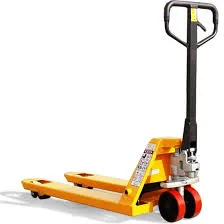


Industrial Fall Protection Equipment Ensuring Safety in the Workplace
In the modern industrial landscape, safety is paramount. Falls are among the leading causes of workplace injuries, accounting for a significant portion of reported incidents each year. To combat this pervasive issue, organizations must invest in effective fall protection equipment. Understanding the various types of such equipment, their applications, and best practices can significantly enhance safety measures in industrial settings.
Fall protection equipment primarily includes personal protective equipment (PPE), guardrails, safety nets, and various harness systems. Personal fall arrest systems (PFAS) are essential in preventing falls from heights. These systems typically consist of a harness, lanyard, and anchor point. The harness distributes the forces experienced during a fall, while the lanyard connects the worker to the anchor point, which should be securely attached to a stable structure. It is crucial for workers to be trained in the proper use of these systems to ensure maximum safety.
Guardrails provide a physical barrier that prevents falls from elevated surfaces. They are particularly useful in locations such as rooftops, loading docks, and elevated walkways. Guardrails are designed to withstand impact and should be placed at the appropriate heights to ensure the safety of workers. Installing and maintaining these barriers can significantly reduce the risk of falls in hazardous areas.

Safety nets also play a vital role in fall protection by catching individuals if they fall from heights. These nets are typically used in construction, repair work, and other situations where falls are a risk, providing a secondary measure of safety when other precautions may fail. Regular inspections of safety nets are essential to ensure their integrity and effectiveness over time.
In addition to the physical fall protection equipment, creating a culture of safety within the organization is crucial. Employers should encourage reporting unsafe conditions and conduct regular training sessions for employees on the importance of fall protection. This training should encompass the proper use of equipment, hazard recognition, and emergency response procedures.
Furthermore, regular inspections of fall protection equipment are necessary to ensure everything is functioning correctly. This includes checking harnesses for wear and tear, ensuring that lanyards are free of damage, and confirming that anchor points are secure. By incorporating these practices, organizations can minimize the risk of falls and create a safer work environment.
In conclusion, industrial fall protection equipment is an essential aspect of workplace safety. By investing in proper equipment, conducting regular training, and fostering a culture of safety, organizations can significantly reduce the risk of falls, protecting their most valuable asset—their workers. Ensuring safety in the workplace not only complies with regulations but also enhances productivity and morale among employees.



